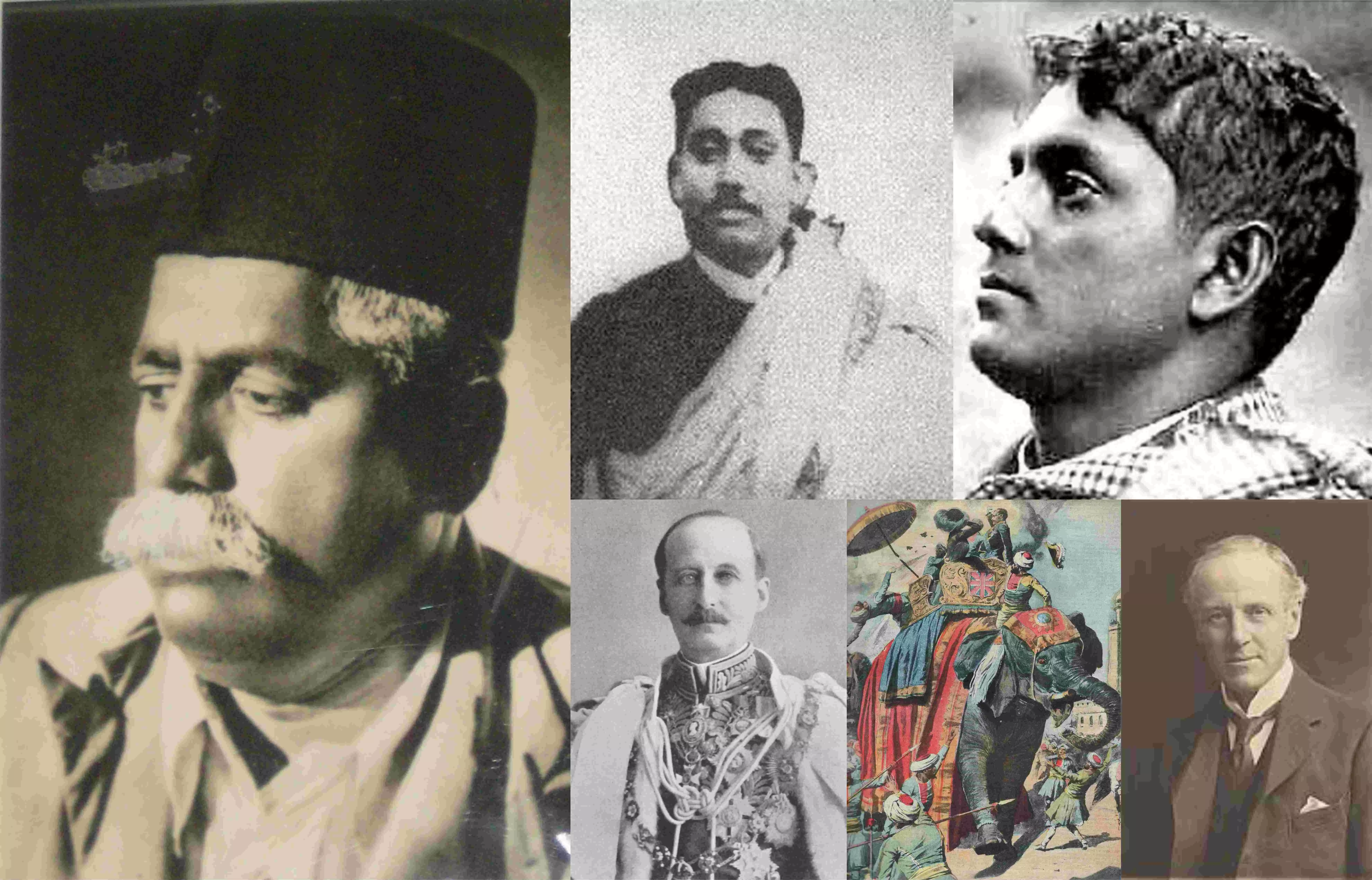Bose, Hedgewar, and the War Within
This is the first of a two-part series tracing a little-known but crucial meeting between Indian revolutionaries in 1940 — at the edge of a world war, and the cusp of a forgotten uprising

Maharaj’ Trailokya Nath Chakraborty mentions his visit to Nagpur, while he was touring north and central India, trying to mobilise and connect various individuals and organisations, discussing with them the emerging war situation and how the revolutionaries could take advantage of it. This was after Subhas Chandra Bose had been expelled from the Congress and Chakraborty and the Anushilan Samiti revolutionaries had thrown in their lot with him, convinced that the time was propitious for a countrywide armed revolt with international help.
“In 1910, when he was studying at the Calcutta Medical College,” reminisced Chakraborty, “he [Hedgewar], Vinayak Damodar Savarkar’s younger brother, Narayan Damodar Savarkar, Dr Athalye (Satara), and other youths from Maharashtra, students of the Medical College, joined our revolutionary party. Nalini Kishore Guha, later author of “Banglay Biplabbad” (Revolution in Bengal,) who was then studying at the Medical College, brought them into the revolutionary party. When I was on the run, once or twice, I took shelter in their hostel. In 1940, I suddenly visited him [Hedgewar] in Nagpur, and asked him whether he remembered ‘Kalicharan Da’, [Chakraborty’s alias during his early revolutionary days], he immediately embraced me.”
A similar conversation, as reported by Jogesh Chatterjee, ensued, with Chakraborty “Kalicharan Da”, discussing with his erstwhile revolutionary protégé Hedgewar, the evolving war situation, the golden opportunity for a countrywide revolt that it offered, the need to keep the young volunteers ready to take the plunge and the overall situation in the country. Chakraborty also discussed “Subhas Babu” with Doctorji. “Hedgewar had a small house in Nagpur city, I had put up there,” recalled Chakraborty. From Nagpur, he proceeded to Kashi. Chakraborty’s reportage, with slight variations, broadly mentions the same details as Jogesh Chatterjee’s in his memoirs of their meeting with Dr Hedgewar in Nagpur.
These paragraphs, recorded by revolutionaries who had no axes to grind, who never felt the need to be politically correct, who had practically abandoned all personal avenues and opportunities for the sole objective and aim of realising India’s freedom, can serve to expose deliberate and distorted canards that are still being spread from motivated sections on Dr Hedgewar’s revolutionary links and connections. It serves the purpose of some to manufacture distortions and false propaganda. It keeps their mills well-oiled and supplied. It keeps them going.
What was Doctorji’s state of health when Trailokya Nath Chakraborty visited him and discussed “Subhas Babu”, and later, when Subhas Bose came to Nagpur with the hope of visiting Doctorji? In his biography of Doctorji, historian Rakesh Sinha, poignantly observes, “Call it fate or Dr Hedgewar’s extreme neglect of his own health; he began to remain ill from 1939 onwards. His illness took its toll, rendering him weak…” Thus, when the Bengal stalwarts such as Subhas, Syama Prasad, Jogesh Chatterjee or Trailokya Nath met him or attempted to meet him in quick succession in Nagpur, it was an extremely ill Doctorji whom they confronted. His physique and health were waning, but Doctorji’s iron will, his quick and alert assessment of the emerging global situation and his continuous preoccupation with the possibilities for India that the situation threw up, remained undiluted.
HV Kulkarni, former Sarkaryavah of the RSS, writes how Dr Hedgewar called him one night, “soon after the outbreak of the Second World War. He lay half asleep, but he was worried. He confided to me his apprehension that we might possibly lose this second golden opportunity. He said, it was our responsibility to harness sufficient strength…” Trailokya Nath Chakraborty’s visit to Nagpur, his suggestion to Subhas that the latter must reconnect with Dr Hedgewar and Subhas’s own visit to Nagpur must be seen against this backdrop. What was Doctorji’s state of mind, what were the thoughts and plans that exercised his mind, and what was it that he was planning or was hoping to work out during this last phase? Rakesh Sinha gives a detailed insight into Doctorji’s mind and into his thinking during the crucial phase, just as the Second World War was about to break out. Dr Hedgewar, writes Sinha, “was carefully observing the events in world politics” just as the Second World War was about to break out. He was part of the last such attempt at internal revolt and insurrection during the First World War. That attempt had failed. However, the preparation for that attempt must have brought him in close touch with leaders like Rash Behari Bose, and with a host of other leaders and revolutionaries from the Anushilan Samiti. That attempt at a nationwide revolt was led by the likes of Rash Behari Bose, Bagha Jatin and others.
Rash Behari Bose’s daring attempt on the life of Lord Hardinge while the Viceroy was moving in procession in Delhi’s Chandni Chowk on December 23, 1912, had sent shivers down the colonial spine. They had hoped to escape the Bengal “anarchists” by shifting India’s capital from Calcutta to a newly constructed Delhi in 1911, and yet the spectre of death and revenge hounded them there as well. Historian Joseph McQuade in his life of Rash Behari Bose, “Fugitive of Empire – Rash Behari Bose, Japan, and the Indian Independence Struggle” writing of the bomb attack on Hardinge in Delhi observes that “by the time the evening papers went to print on the 23rd, news of the attack had spread far and wide, sending a ‘thrill of horror and indignation through London.’”
As mentioned earlier, we will continue with the concluding part of this article next week.
The writer is a member of the National Executive Committee, BJP, and the Chairman of Dr Syama Prasad Mookerjee Research Foundation. Views expressed are personal



